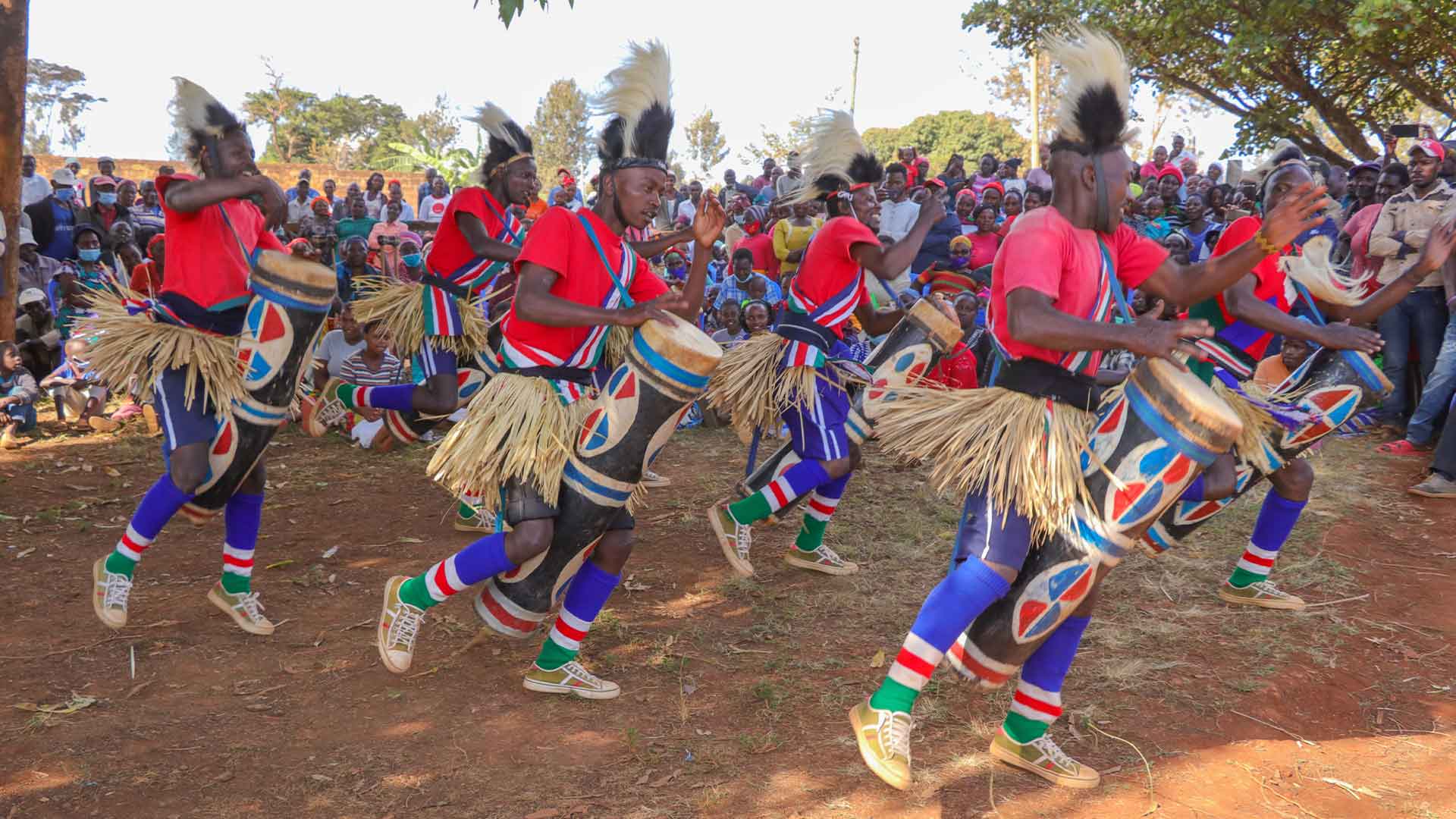Music in Africa
The world of African music, where rhythms connect communities and generations.

African music, deeply embedded in cultural traditions, is primarily performed during communal gatherings and special occasions. The music across Africa is incredibly ancient, reflecting the continent’s vast diversity with each region and nation boasting its distinct musical heritage. This music plays a crucial role in religious practices, used in ceremonies and rituals to convey stories across generations, and to accompany singing and dancing.
In most parts of Africa, traditional music is conveyed orally and is rarely documented in written form. In the musical traditions of sub-Saharan Africa, there is a heavy reliance on a variety of percussion instruments, such as xylophones, djembes, and drums, including tone-generating devices like the mbira, often referred to as the “thumb piano.”
The music and dance of the African diaspora, which have shaped genres like American blues and jazz as well as Caribbean styles such as soca and calypso, draw significantly on these African musical roots. Furthermore, Latin American styles like rumba, conga, and salsa have their foundations in African rhythms and have influenced contemporary African music in return.
African music is predominantly rhythmic, similar to the musical traditions of Asia, India, and the Middle East. It is known for its complex rhythmic patterns, where different rhythms are layered over one another to create polyrhythms. The most typical polyrhythm involves playing three beats over two. Unlike Western music, which tends to harmonize different musical parts, African music emphasizes expressing life’s various dimensions through sound. Each instrument or voice may embody a different aspect of life or character, prioritizing the narrative or message over harmonic integration.
Vocal techniques in African music are diverse, incorporating complex melisma and yodeling, among others. A broad array of musical instruments is utilized, including an extensive range of drums, xylophones like the mbira, and various wind instruments such as flutes and trumpets. String instruments like the oud and ngoni are also common, often providing musical accompaniment.
African musical instruments are categorized into five groups: membranophones (drums and similar instruments), chordophones (stringed instruments), aerophones (wind instruments), idiophones (self-sounding instruments like shakers), and general percussion, which includes clapping and stomping. Many instruments are ornately decorated with carvings, feathers, or beads that hold cultural significance.
Specific drums, like the talking drum, bougarabou, and djembe, are prevalent in West African music, while water drums are common in both Central and West Africa. The ngoma drums, found in Central and Southern Africa, are integral to various musical styles. These instruments facilitate the characteristic polyrhythmic music of Sub-Saharan Africa, which contrasts distinctly with Western polyphony. Instruments like the mbira and kora are specially designed to allow musicians to play intricate cross-rhythms more easily, reflecting the unique musical structure that prioritizes rhythmic complexity over melodic harmony.
General Knowledge Base
General information about Music in Africa
Traditional African music is primarily rhythmic, utilizing a variety of percussion instruments and vocal styles.
Most African music is passed down orally, through performances and storytelling, rather than written scores.
Music is central in ceremonies, religious rituals, and social gatherings, helping to maintain cultural heritage.
Instruments include drums like djembes and ngomas, the kora, mbira, and various flutes and xylophones.
Polyrythm involves multiple conflicting rhythms being played simultaneously, a staple in African music.
Call-and-response is a form of interaction between a lead singer and the audience or chorus, enhancing community participation.
Yes, African music often uses pentatonic and hexatonic scales, providing a distinctive sound profile.
Music and dance are inseparable in Africa, with rhythms directly influencing dance styles and movements.
Drums are often handcrafted from natural materials, with each having unique tones suited to different musical contexts.
West African music often focuses on complex rhythms and percussion, while East African music frequently features melodic and harmonic instruments.
